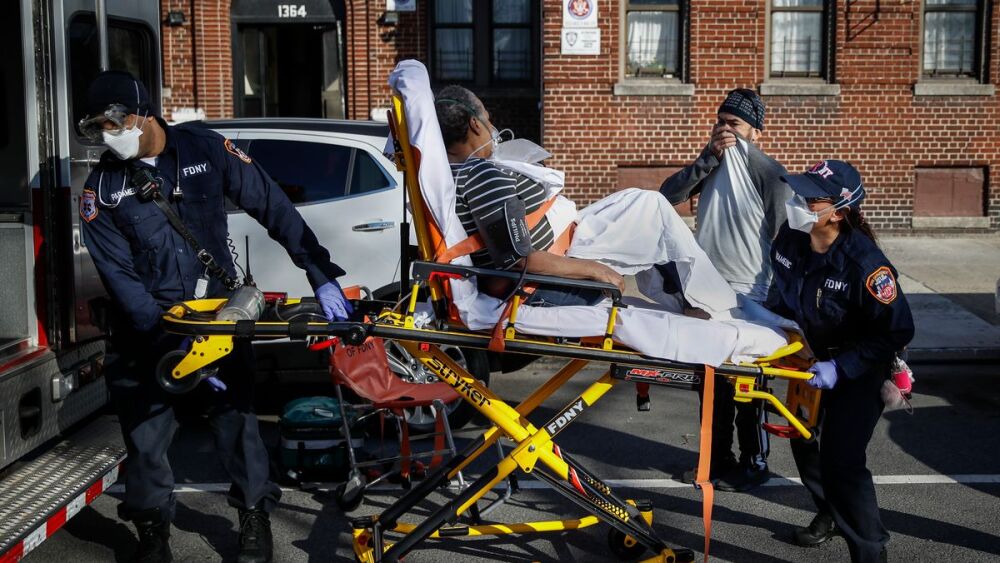To Americans, March Madness usually sees college rivalry, brackets, sweet sixteens and final fours. That was, until 2020. At the outset, it all seemed mad, but as we now know, it all turned to tragedy, loss and a different world 365 days later.
On Mar. 11, 2020, Dr. Tedros Adhanom, director-general of the World Health Organization (WHO) declared COVID-19 pandemic, at the time identifying over 118,000 cases in 110 countries and the sustained risk of further global spread.
Two days later, President Donald Trump declared a national emergency and travel ban, and on Mar. 19, California led the nation in issuing a statewide stay-at-home order, and the lockdown began. For EMS, like in every other disaster and emergency we have faced, we ran headlong into – not away – from a looming storm.
What happened next fully supports my long-held theory that EMS and ambulance services are the last great health and social care safety net – the Marine Corps of the healthcare navy. In the opening year of the assault on COVID-19, EMS has been on the front lines, has provided care, and made the sacrifice in equal measure. As past IAFC President Gary Ludwig says, we have been at the “tip of the spear.”
Additionally, the financial lifeblood that supports EMS operation has also been threatened. In an industry where income is mainly derived from transporting a patient to a hospital, many locations saw a precipitous fall in call volume, which in real terms equals reduced funding.
To fully illustrate the effects of COVID-19 on the EMS industry, NEMSIS produced a weekly “By the Numbers” set of charts based on over 50 million annual calls to demonstrate 911 call volume and activity over several conditions affected by COVID-19. The results are fascinating and show the ebb and flow of patient conditions and the effect on the volume of EMS activity.
In the last 12 months, we have been ever-present and fully following the Darwinian principle that to survive, we have had to adapt. Where COVID-19 spiked, EMS volume rose to levels never before seen in jurisdictions, while the debilitating effect of the virus on staffing left services with a much-reduced ability to respond. The initial surge in New York and New Jersey saw the deployment of the National Ambulance Task Force with hundreds of crews deploying from all over the country to help out. Elsewhere, the lack of calls caused an immediate reduction in income and, in some cases, furloughs due to lack of both calls and money.
Diverting EMS where needed
The reality that EMS is a business, and no haul equals no pay hit home in 2020. To bridge the income gap – and because the nature of EMS is always to do the right thing for the good of the community – many agencies diversified their services to meet the immediate needs of their local populations and health systems.
One EMS agency, with a new hire class that may have otherwise faced mass furlough, diverted their trainees overnight to local authority contact tracing specialists. American Ambulance of Fresno offered its class to the county public health contact tracing medical investigation team until they got up to speed. Similarly, all over the country, agencies became the mainstay of testing stations with staff that otherwise may have been sent home. On the East Coast, PRO EMS of Cambridge, Massachusetts, teamed up with its hometown neighbors, Harvard and MIT, and their combined BROAD institute to administrate a wide-ranging, nationwide COVID-19 test system processing over 1 million tests.
Many examples of EMS supporting EDs and nursing homes came to the fore. In the San Francisco Bay area, Royal Ambulance, experiencing a fall in volume in their inter-facility transport business, sent more than 40 EMTs to eight facilities as part of its Helping Hands program. Paramedics also supported EDs when nursing outages caused staffing shortfalls.
The transport and transfer of potential or positive COVID-19 patients occurred from the evacuation of cruise ship passengers to quarantine centers, to the mass transfer of prisoners from jail to hospital as the virus spread inside the locked-down, lockdown.
The nation’s EMS has stood up to meet any task that has come its way and done so with distinction.
National organization advocacy
On the national scene, the requirement for national associations to move their legislative agendas to one side and unify, as one, has paid dividends. Combined lobbying, responding to the same call to action to ensure that Congress and the White House considered all things EMS has been effective.
This week, the U.S. Senate passed language for Medicare coverage of emergency treatment in place of lower acuity patients by ground ambulance services providers and suppliers during the COVID-19 public health emergency. The American Ambulance Association, along with the International Association of Fire Chiefs, International Association of Firefighters, National Association of EMTs and National Volunteer Fire Council all pushed for passage of the bill language. The hope is that this set of partnerships for the good and benefit of EMS continues.
Treatment in place: The future of EMS
Despite the great work by all, the toll on our profession, industry and way of life has been tragic. The role of honor, the line of duty death toll, has been significant and, sadly, it continues to grow. Many have made the ultimate sacrifice and we will never forget that. As we strive for the creation of a National EMS Memorial in our nation’s capital, perhaps this may provide a sad impetus to get the project over the finish line.
One year on, as the most recent wave of the virus has fallen to a level that enables the healthcare world to at least cope, the national vaccine rollout now sees a million inoculations a day, meaning there may be just a little light at the end of the tunnel.
EMS has had one heck of a year; we have been ever-present and at the front and center of every spike in every locality. The last 365 days have defined us as an industry – the public has seen more of our heroism and sacrifices via the national news than ever before. Did we ever think we would be on the front cover of “Time” magazine? While that may not seem like a big deal, it captured the zeitgeist of the year that 2020 was for us.
Looking to the future, the waiver that will grant reimbursement for treatment in place may prove so successful that it becomes a genie that proves difficult to put back in the bottle once the emergency is over. Treatment in place and alternate destinations may assist us to stay in business and give the patient the right assessment and treatment first time, every time. No matter what the next 365 days will bring us, we know we can rise to the challenge and be the universal safety net, while looking after our own and reflect on a job very well done.
Watch: “Honoring the commitment of those protecting their communities from the front lines.” Sharing gratitude and respect for the EMS providers who have sacrificed so much in the fight against COVID-19














